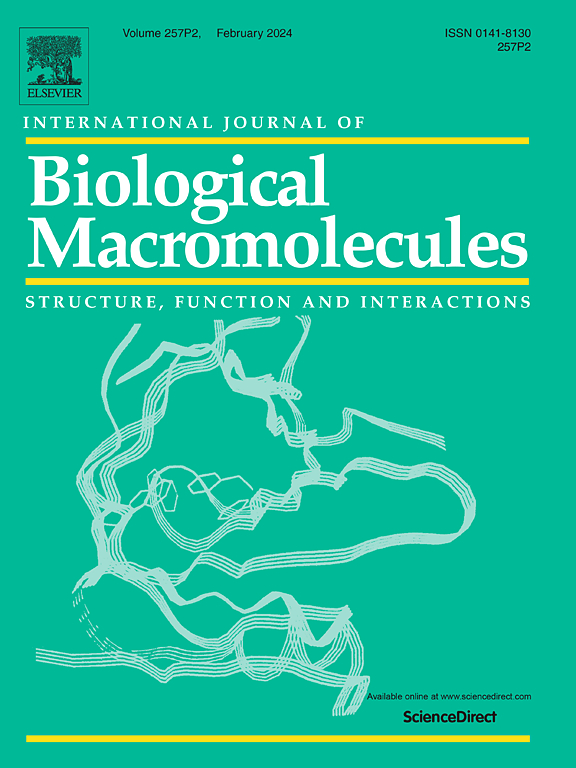Dynamic analysis of bovine bone high-temperature hydrolysate emulsion formation based on microstructure and physicochemical interactions
IF 7.7
1区 化学
Q1 BIOCHEMISTRY & MOLECULAR BIOLOGY
International Journal of Biological Macromolecules
Pub Date : 2024-11-17
DOI:10.1016/j.ijbiomac.2024.137667
引用次数: 0
Abstract
In the food industry, the emulsifying process alters both the stability and quality of the emulsified products prepared by bovine bone high-temperature hydrolysate (BBHH). The microstructure and interactions of BBHH emulsion were characterized by cryo-scanning electron microscopy (Cryo-SEM) and Raman spectroscopy during emulsification. Notably, BBHH emulsion exhibited the best properties under emulsifying for 120 s, attributed to its interfacial adsorption characteristics. In terms of microstructure, the droplets were small and uniform, and the cross-linking and network structure between the droplet surfaces were obvious at 120 s. Raman spectroscopy indicated that the adsorption of BBHH at the oil-water interface mainly involved an increase of the β-sheet at the expense of the α-helix region. In addition, protein adsorption and structural development at the interface were driven by hydrophobic interactions, while further rearrangement and polymerization were mediated by disulfide bonds. Furthermore, the stability and particle size distribution of the emulsion also supported the results. This study provided a theoretical basis for the behavior of BBHH emulsion formation, which expanded valuable insights into the mechanisms by which liquid food emulsification systems mediated by animal-derived proteins and how they behave under a variety of external conditions.

基于微观结构和理化相互作用的牛骨高温水解乳液形成动态分析
在食品工业中,乳化过程会改变牛骨高温水解物(BBHH)制备的乳化产品的稳定性和质量。在乳化过程中,冷冻扫描电子显微镜(Cryo-SEM)和拉曼光谱对 BBHH 乳化液的微观结构和相互作用进行了表征。值得注意的是,BBHH 乳液在乳化 120 秒后表现出最佳性能,这归功于其界面吸附特性。在微观结构方面,120 秒时液滴小而均匀,液滴表面之间的交联和网络结构明显。拉曼光谱表明,BBHH 在油水界面的吸附主要是增加了 β-片段,而牺牲了 α-螺旋区域。此外,蛋白质在界面上的吸附和结构发展是由疏水相互作用驱动的,而进一步的重排和聚合则是由二硫键介导的。此外,乳液的稳定性和粒度分布也支持上述结果。这项研究为 BBHH 乳液的形成行为提供了理论依据,为深入了解动物源蛋白质介导的液态食品乳化系统的机制及其在各种外部条件下的行为方式提供了宝贵的见解。
本文章由计算机程序翻译,如有差异,请以英文原文为准。
求助全文
约1分钟内获得全文
求助全文
来源期刊
CiteScore
13.70
自引率
9.80%
发文量
2728
审稿时长
64 days
期刊介绍:
The International Journal of Biological Macromolecules is a well-established international journal dedicated to research on the chemical and biological aspects of natural macromolecules. Focusing on proteins, macromolecular carbohydrates, glycoproteins, proteoglycans, lignins, biological poly-acids, and nucleic acids, the journal presents the latest findings in molecular structure, properties, biological activities, interactions, modifications, and functional properties. Papers must offer new and novel insights, encompassing related model systems, structural conformational studies, theoretical developments, and analytical techniques. Each paper is required to primarily focus on at least one named biological macromolecule, reflected in the title, abstract, and text.
文献相关原料
公司名称
产品信息
阿拉丁
Sodium dodecyl sulfate (SDS)

 求助内容:
求助内容: 应助结果提醒方式:
应助结果提醒方式:


